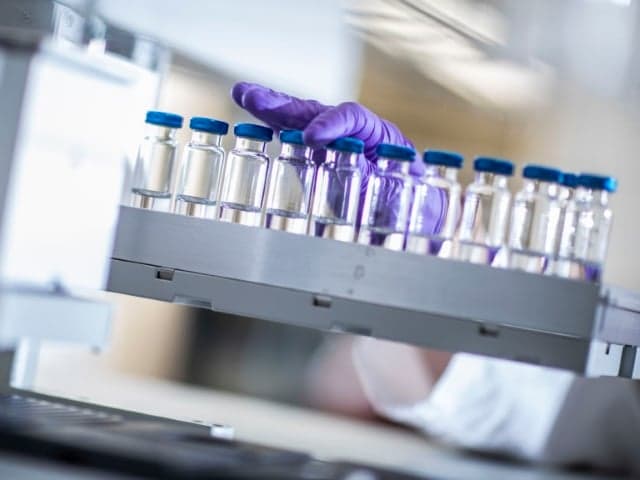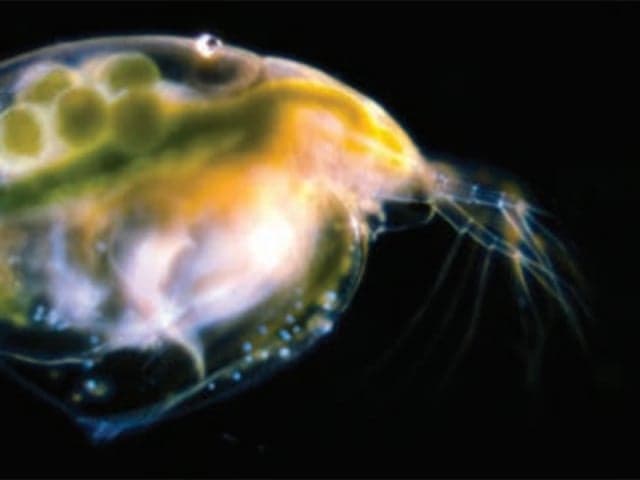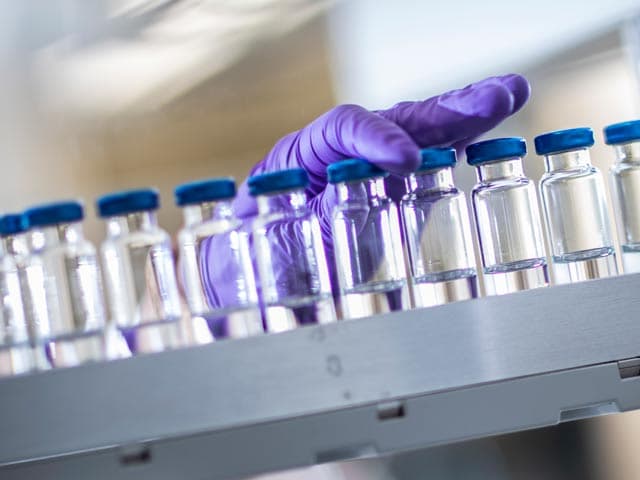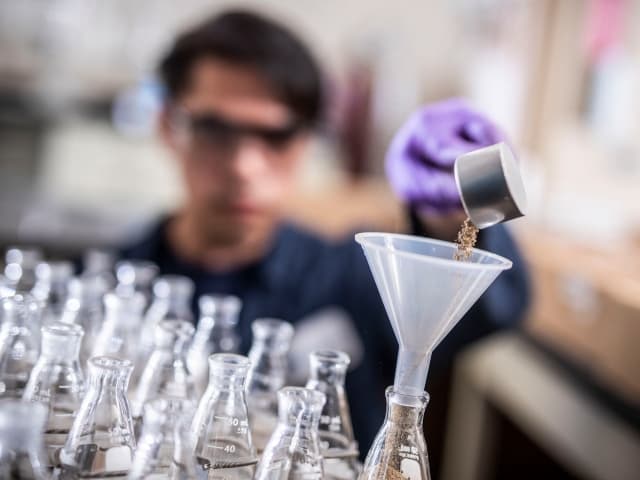Water Testing & Analysis Laboratory Services
Element's accredited laboratories deliver accurate, timely water testing services and analysis for drinking water, groundwater, surface water, and wastewater. We offer rapid turnaround times while detecting contaminants at parts-per-trillion levels. From sample collection through detailed reporting, our comprehensive range of solutions provide end-to-end support - helping you meet strict regulatory requirements, ensure environmental compliance, and protect public safety.
Why Element are Global Leaders in Water Testing?
Your Trusted Partner for Comprehensive Water Testing Services
Whether you’re managing water quality for compliance, development, or remediation, Element delivers the critical support you need - fast, reliably, and backed by global ISO 17025 accredited laboratories. From routine monitoring to emergency response, we’re your single trusted partner covering every major water matrix: drinking water, wastewater, groundwater, surface water, and industrial discharge.
Our extensive analytical capabilities cover metals, nutrients, organics, glycols, amines, alcohols, and key physical-chemical parameters - everything from trace metals and pesticide residues to BOD, COD, and TDS. No matter your industry - energy, construction, agriculture, or public utilities - our precise results help you meet environmental obligations, secure permits, and keep your operations running smoothly.
Water testing is not just essential; it’s a critical safeguard for public health and environmental safety under strict regulations. We provide tailored solutions to minimize risks, identify contaminants, and prevent damaging impacts, ensuring your projects stay compliant and on budget.
We support drinking water systems, site remediation, agricultural waters, wastewater, groundwater, and surface water with fast, accurate results and all necessary accreditations. Our experts analyze physical characteristics like temperature, turbidity, taste, and odor, as well as chemical properties including pH, dissolved oxygen, heavy metals, and organic compounds—helping you confirm water is safe and fit-for-purpose.
You’ll also benefit from our full-service support —sample containers, filters, preservatives, and detailed environmental reporting that simplifies your path to compliance. Whether you’re an environmental consultant, municipality, or private business, we customize monitoring programs to tackle your unique water testing challenges.
Our specialized services include:
- Wastewater Analysis
- Drinking Water Analysis
- Bioassay & Aquatic Toxicity Testing
- Water Chemistry Testing
- Physical & Chemical Properties of Water Testing
- Drinking Water Analysis
- Wastewater Testing & Analysis
- PFAS Testing
- Dioxins and Furans Testing
- Organics Testing in Water
- Hydrocarbon Testing
- Metals Testing for Soil and Water
- Nutrient Testing in Water
- Analysis of Glycols, Amines & Alcohols
- Marine Sediment Analysis
Municipal/Public Water:
- Potable water distribution testing
- Drinking water systems testing
- Swimming pool water testing (NEA requirements)
Industrial Water:
- Industrial process water testing
- Trade effluent testing (NEA/PUB requirements)
- Wastewater requiring regulatory approval
Environmental Water:
- Groundwater testing
- Surface water testing
- Site remediation studies
- Routine monitoring for landfills
- Upstream/midstream/downstream energy production monitoring
Agricultural Water:
- Agricultural water testing
- Irrigation water testing
- Livestock consumption safety testing
- Herbicide/pesticide contamination testing
Specialized Regional Services:
- NEWater testing (Singapore's reclaimed wastewater)
Supporting Services:
- Sample collection and containers provision
- Tailored monitoring programs development
- Environmental reporting
- Regulatory compliance guidance
- Data interpretation and action plan development
Services

Wastewater Testing Services
Element's state-of-the-art wastewater testing laboratories analyze your wastewater samples, deliver accurate results and provide the guidance you need to take the next steps.

Drinking Water Testing
Element's experts conduct routine drinking water testing and analysis using our state-of-the-art equipment to provide fast and accurate results for environmental consultants, municipalities, and private businesses.

Bioassay Aquatic Toxicity Testing Services
Element's aquatic toxicity testing services deliver GLP-compliant solutions. With both analytical and toxicity testing under one roof, we provide accurate results, regulatory compliance, and faster time to market for freshwater and saltwater environments.

Dioxins and Furans Testing Services
Element's Dioxins and Furans Testing ensures regulatory compliance with ISO 17025 and MCERTS accreditation. Offering ultra-sensitive HRGC-MS detection, on-site sampling, and flexible turnaround times, our expert team supports comprehensive environmental testing across all matrices.

PFAS Testing Services
Element's ISO17025-accredited PFAS testing delivers precise detection down to parts per trillion. With advanced instrumentation, dedicated laboratories, and expertise in regulatory compliance, we provide fast, reliable results across water, soil, and products. Our comprehensive solutions help you meet complex regulations while safeguarding human health and the environment.

Hydrocarbon Testing
Need reliable hydrocarbon testing? Element delivers precise analysis of water and soil samples to ensure regulatory compliance and prevent environmental issues. Our advanced labs provide fast, accurate results for all your testing needs.
Your Challenges, Our Solutions
Complex regulatory compliance
Detecting harmful contaminants accurately
Time-sensitive analysis needs
Standards we test to and materials we test
- ISO 17025
- United States Environmental Protection Agency (USEPA) methods
- American Public Health Association (APHA) procedures
- NEA/PUB requirements (Singapore, Malaysia)
- ASTM E1613
- MIL specifications for metals testing
We provide comprehensive analysis across all water matrices and contaminant types:
- Drinking water
- Potable water
- Groundwater
- Surface water
- Wastewater
- Trade effluent
- Agricultural water
- Irrigation water
- Industrial process water
- Swimming pool water
- NEWater (Singapore)
Heavy metals
Our ICP-MS and ICP-OES capabilities detect metallic elements at parts per billion to parts per trillion levels:
- Arsenic
- Lead
- Cadmium
- Chromium
- Copper
- Mercury
- Nickel
- Selenium
- Zinc
- Beryllium
- Boron
- Aluminum
- Iron
- Silver
- Tin
- Uranium
- Calcium
- Sodium
- Potassium
- Magnesium
Organic compounds
Advanced chromatographic and mass spectrometric analysis for industrial and environmental contaminants:
- Alcohols (Methanol, Ethanol, Butanol, Isopropanol, Pentanol)
- Amines (Ethanolamine, Di-Isopropanolamine, Diethanolamine, Triethanolamine, Methyldiethanolamine, Sulfolane)
- Glycols (Ethylene Glycol, Propylene glycol, Diethylene glycol, Triethylene glycol, Tetraethylene glycol)
- Hydrocarbons
- Pesticides
- Dioxins
- Furans
Chemical and Physical Parameters
Comprehensive assessment using colorimetric, titrometric, and electronic measurement techniques:
- Nutrients: Nitrogen compounds, Phosphorus, Potassium, Sulfate (using ion chromatography and Total Kjeldahl Nitrogen methods)
- Physical characteristics: Temperature, Color (measured in TCU), Turbidity, Taste and odor (including organoleptic methods), Total dissolved solids
- Chemical properties: pH, Dissolved oxygen, Chlorine, Fluoride, Biochemical Oxygen Demand (BOD), Total Organic Carbon (TOC)
Why Choose Element

Complete water testing solutions
Advanced analytical techniques
Regulatory compliance expertise
Tailored testing programs
But don't just take our word for it
See what others have to say about partnering with Element
Analytical Techniques/Methodologies We Use For Water Testing:
Spectroscopic Methods:
- Inductively Coupled Plasma with Optical Emission Spectroscopy (ICP-OES)
- Inductively Coupled Plasma with Mass Spectrometry (ICP-MS)
- Gas Chromatography (GC)
- Mass Spectrometry (MS)
Chromatographic Methods:
- Ion Chromatography
- Advanced chromatographic techniques [for organic compounds]
- Advanced mass spectrometric methods [for organic compounds]
Colorimetric and Chemical Methods:
- Automated Colorimetry
- Colorimetric analysis (using color reagents for concentration determination)
- Titrometric analysis (using known concentration solutions)
- Total Kjeldahl Nitrogen (TKN) techniques
Specialized Methods:
- Organoleptic methods (for taste and odor detection at low concentrations)
- Photoelectrochemical Chemical Oxygen Demand
- Advanced spectroscopic methods [for natural organic matter]
Physical/Electronic Measurement:
- Electronic devices (digital meters, colorimeters, photometers)
- Specific UV absorbance measurement
- Turbidity measurement
Sample Preparation Techniques:
- Field filtration (0.45µm filters)
- Acid preservation (nitric acid to pH <2)
- Nebulization for ICP analysis
Advanced Sample Handling and Preservation
Our comprehensive sample management protocols ensure accurate, reliable results. For dissolved metals analysis, we provide 0.45µm filters for field filtration and nitric acid preservation to maintain pH below 2, preventing metal conversion to insoluble salts that could bias results. Total metals testing captures the overall mobility of metals in the environment through water systems. Our proper preservation techniques extend sample holding times up to 6 months, giving you flexibility in project scheduling while maintaining data integrity.
Specialized Detection Capabilities
Beyond standard analysis, our laboratories offer specialized services including organoleptic methods for detecting taste and odor compounds at low concentrations—critical for drinking water treatment plants and industrial processes. Our Total Organic Carbon (TOC) and Dissolved Organic Carbon (DOC) analysis helps quantify complex organic matter from both natural sources and human activities, while our Biochemical Oxygen Demand (BOD) testing provides indirect measurement of biodegradable organic compounds.

